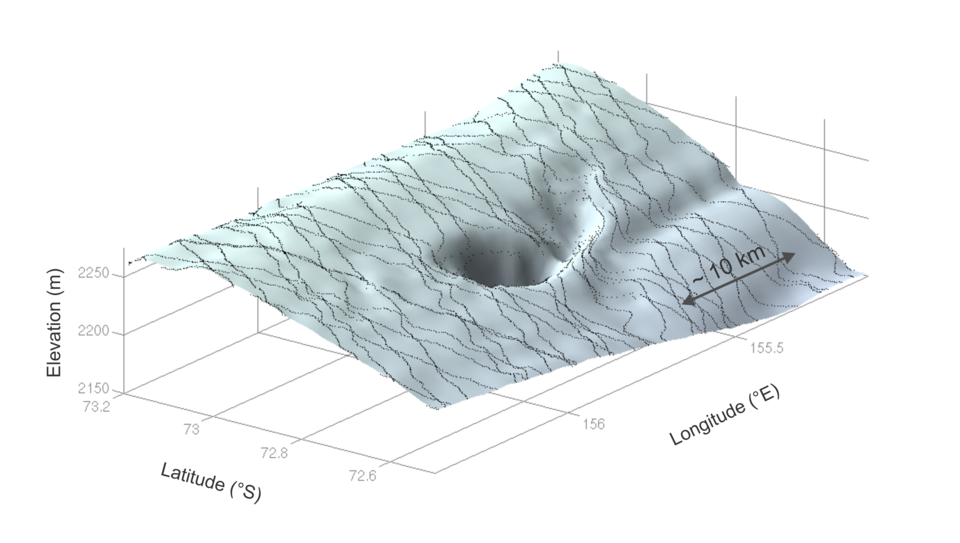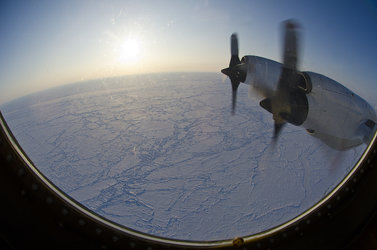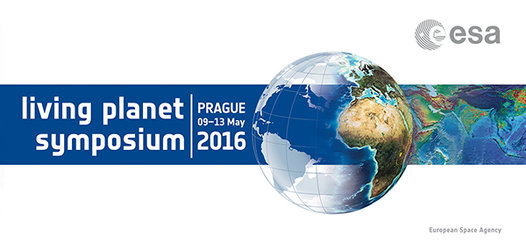New dimensions on ice
Offering new insights into our fragile polar regions, ESA’s CryoSat mission has provided three consecutive years of Arctic sea-ice thickness measurements, which show that the ice continues to thin.
Although satellites have witnessed a downward trend in the extent of sea ice over the last two decades, it is essential to have accurate information on the mass or volume of ice being lost. This is a more accurate measure of the changes taking place.
Along with observations of ice extent, CryoSat’s measurements of thickness now span from October 2010 to April 2013, allowing scientists to work out the real loss of ice, monitor seasonal change and identify trends.

Speaking today at the Living Planet Symposium in Edinburgh, UK, Prof. Andrew Shepherd from the University of Leeds, UK, said, “CryoSat continues to provide clear evidence of diminishing Arctic sea ice.
“From the satellite’s measurements we can see that some parts of the ice pack ice have thinned more rapidly than others, but there has been a decrease in the volume of winter and summer ice over the past three years.
“The volume of the sea ice at the end of last winter was less than 15 000 cubic km, which is lower than any other year going into summer and indicates less winter growth than usual.”
While it seems unlikely that a record minimum of sea-ice extent will be set this September, the thinner ice at the start of summer could mean that the actual volume of ice may reach a new low.
Rachel Tilling, PhD student at University College London, who is working with the CryoSat data stated, “Readings from CryoSat in October, when the ice starts to refreeze, will confirm this either way.”

Moreover, scientists can look forward to a continued stream of this vital information from CryoSat for some time.
“CryoSat has been in orbit since 2010 and with the satellite still in excellent health it is now set to continue providing precision measurements until 2017,” said ESA’s Tommaso Parrinello, who is responsible for the mission.
Much of the success in the way the mission’s radar height measurements are exploited to understand ice change is thanks to Prof. Seymour Laxon from University College London who passed away in January as the result of an accident.
A special session was held on the first day of the symposium to celebrate his scientific achievements and legacies as well as those of his colleague, Dr Katharine Giles, who also died in March.

As well as working with CryoSat, Seymour and Katharine were both involved in practical work in the harsh polar environment. For example, they both took part in ESA’s extensive campaigns in the Arctic in 2011 to check CryoSat’s measurements. Taking measurements on the ice and from the air are an essential part of the mission to ensure that the satellite’s readings remain accurate.
Another such field campaign will start next March. As before, the campaign activities will benefit from ESA’s well-established collaboration with NASA as they will be involved in some carefully timed flights directly under CryoSat orbiting above.

CryoSat is also delivering important results on land ice. Recently, it provided evidence of a huge flood under the Antarctic ice sheet. New measurements combined with older data from NASA’s ICESat mapped a large crater that formed as the overlying ice sank to fill the gap left by lake water that drained away.
The map revealed that about six cubic km of water had escaped from under the ice, probably straight into the ocean, between 2007 and 2008.














